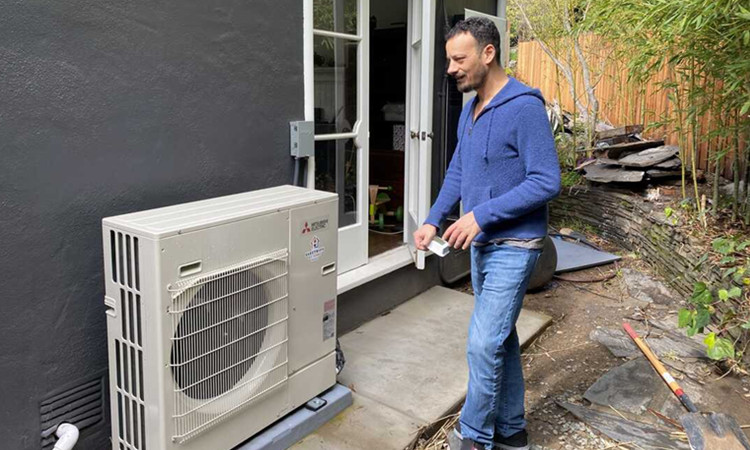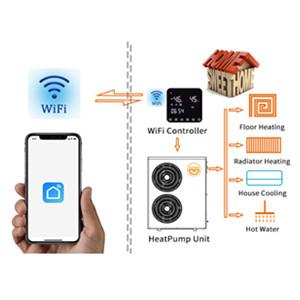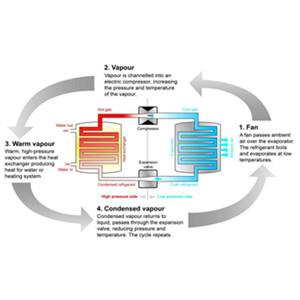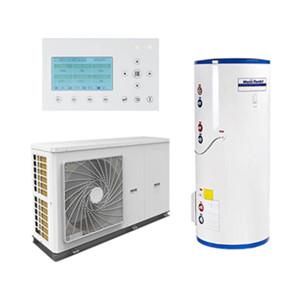Air Source Heat Pump Costing a Fortune?
The heat pump industry is currently split into two camps, distinguished by temperature. Low temperature heat pump advocates hate high temperature heat pumps. And those of us who like high temperature heat pumps don't understand what the fuss is all about. Most of the low temperature debate comes from manufacturers who are still peddling old-fashioned low temperature technology and haven't upgraded their product range.
All the good manufacturers now offer heaters that can reach 80 degrees Celsius, thanks to the new wonder refrigerant R290. But just because it can reach 80 degrees Celsius doesn't mean you have to run it at that temperature. My car can reach 150mph, but I don't drive that fast, officer.
All the money savvy people tell you that you can save a ton of money by using a super cold heat pump. But is that true? Let's find out.

Running the numbers
The average home is a 3 bedroom semi-detached house with a floor area of 120 square meters, built in the 1930s but now has loft insulation and double glazing.
This house uses 12,000 kWh of natural gas per year to deliver 11,000 kWh of heat and hot water. The rest is exhausted through the flue.
All informed people assume that running a heat pump at high temperatures is very expensive.
Quite the opposite. Here are the figures based on the ten best performing units from a high-volume manufacturer:
If you buy a heat pump and run it at 65 degrees Celsius, this house will use 3,666 kWh of electricity per year.
* If it runs at 60 degrees Celsius, it will use 3,313 kWh;
* If it runs at 50 degrees Celsius, it will use 2,835 kWh;
* If it runs at 45 degrees Celsius, it will use 2,650 kWh;
* At 40 degrees Celsius, it will use 2,494 kWh.
If we assume a cost of £0.30 per kWh, at 65 degrees Celsius, the cost per year would be £1,099, or £91 per month
* At 60 degrees Celsius, the cost per year would be £994;
* At 50 degrees Celsius, the cost per year would be £945;
* At 45 degrees Celsius, the cost per year would be £795;
* At 40 degrees Celsius, the cost per year would be £748.
Is this a sensible idea?
“Okay”, I hear some people say, “so if you buy a heat pump and run it at 40C it will save 50% of energy compared to a unit running at 65C? Surely this leads to the conclusion that high temperature heat pumps are not a good idea?”
Don’t be so quick: most people who can do the math, or have actually measured, have worked out that while a gas boiler might be set at 70C, the boiler cycles and is timed so that its average outlet temperature is well below 70C.
You can get the same warmth in the house by running the boiler (or heat pump) at a lower constant temperature for longer periods of time. When installed with a gas boiler, radiators are not sized to run at 70C all day. If you measure the radiator temperature over a 24 hour period on a very cold day, the average temperature is probably 50-55C.
So setting the heat pump to 60C means you can keep your old radiators and pipes, and run the heating system for longer periods of time so that you are warm and comfortable. If you don't believe me, try this with your boiler: next time it's cold, set your boiler to 60C and run it 24/7, I bet you'll feel warm. Then turn it down to 55C one day, then 50C the next day until the house no longer reaches temperature. That way you'll know how hot you actually need your water to be. It's a way to try out a heat pump without buying anything.
So based on this example you can see why it's not reasonable to compare the running costs of a system set to 65C - nobody runs their heat pump at 65C.
Now let's look at the coldest end of the spectrum. In theory you could set your radiators to 40C on the coldest day: you'd just make them bigger. A radiator running at 40C would need to be twice as big as one running at 60C to give off the same amount of heat. That's great if you're willing to install new radiators that are significantly bigger than the old ones. But this is why most 40C systems use underfloor heating: because the floor is so large compared to the radiators, they can run at much lower temperatures.
A better comparison
Back to our average house: we can usually ignore 40C operating temperatures because it's hard to achieve. And, as mentioned above, 65C operating temperatures will never happen. So in practice, we need to compare a cold system running at 45C with all new radiators to an existing system running at 60C. That's a saving of £195 per year.
If each new radiator costs £200-£300 to replace, the payback period will be quite long.
But the bottom line is, if you want super efficient low cost, go for low temperature. If you want a quick, cheap, simple, hassle-free installation, go for higher temperature. Any decent installer will give you the options, costs and running costs so you can make your own decision.
At the end of the day, it's the homeowner's problem. It's their house and they can do whatever they want. All we can do is try to convince them.





